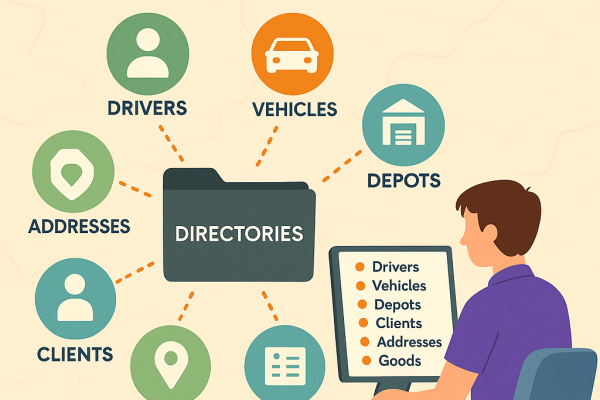Why Asset Tracking Is Essential in Logistics & How Technology Can Help

by
Bryan Christiansen
June 15, 2022
In this post, guest writer Bryan Christiansen shares his insights into asset tracking in logistics.
Logistics and supply chains are extremely complex to maintain, manage, and control. The importance of well-run logistics and supply chain has become even more evident with the recent supply chain crisis.
Every business ought to improve the logistics aspect of their operations to increase the efficiency of the whole operation. The complimentary advantage of efficient operations is reduced costs.
Asset tracking is the key to achieving a robust logistics network delivering efficient operations.
What is asset tracking?
Asset tracking is the process of monitoring and tracking physical assets in a logistics operation. This helps to keep track of the physical location of various assets.
Asset tracking can also include condition monitoring from a remote location. In logistics, the major asset tracked is the fleet. In addition to that, other equipment that assists in transportation needs to be tracked.
Importance of asset tracking
In logistics, the fleet is critical to transporting and delivering goods. Tracking the assets that are necessary for transportation helps to manage them better.
The company could also keep track of useful assets and unproductive assets. This would enable the company to invest more in productive assets and discard unproductive assets. Executing the same will streamline logistics operations.
Keeping track of assets means there is a paper trail or digital trail for all movement and transactions. This can be used later for audit and analysis. Some industries may also require it as part of compliance.
Detailed analysis of recorded data can throw light on inefficiencies and redundancies in logistics operations. This can be used to change operations to improve efficiency and bring down costs.
Take, for example, last mile logistics. Tracking assets and how well they perform can be used for in-depth analysis. This detailed analysis will generate insights into the ways in which delivery routes can be planned and optimized to improve delivery times, reduce fuel consumption, and reduce costs.
Implementing the optimized solution to the logistics network will deliver short-term and long-term benefits for the firm.
Asset tracking helps to get an idea of the stage of the lifecycle each asset is in. All assets once in operation will have to be replaced one day.
Keeping track of assets will help in asset lifecycle management (ALM).
Proper ALM will help in generating maximum value out of every asset. This delivers a high return on investment and healthy profits for the logistics operation.
Technology for asset tracking
Asset tracking can be done manually by issuing unique labels for assets and recording the status of the asset. For a large logistics company, the number of assets to be tracked is huge, running into millions.
Tracking such a large number of assets manually is cumbersome. Next to impossible in many instances. Manual tracking does not scale.
Technology can be leveraged for automated asset tracking. Multiple technologies are involved in asset tracking. Broadly, it can be classified into two: hardware and software.
Hardware
Hardware refers to the technology that is tagged with the asset to keep track of it. The basic functionality of the hardware is to relay information on the location of the asset being tracked. Different technologies out there can be used to track assets.
Some of the prominent hardware technologies used for asset tracking are.
-
Global Positioning System (GPS).
-
Barcodes.
-
Radio Frequency Identification (RFID).
-
Near Field Communication (NFC).
-
WiFi.
-
Bluetooth.
-
LoRa.
Chips or small circuit boards with one or more of these technologies can be used to track the physical location (or relative location) of assets that have to be monitored. Clubbing other sensors with these technologies can also help in the state of the tracked asset.
Industrial internet of things (IIoT) enabled sensors are to be used for tracking assets in real-time.
This means asset tracking can be integrated seamlessly with the Industry 4.0 roadmap for businesses.
Software
Hardware alone cannot deliver asset tracking for logistics businesses. It has to be coupled with strong software to become fruitful for the business. The information from the hardware is processed and presented by the software.
Some of the software that should be used along with asset tracking software are.
In addition to the software, logistics teams can also use strong analytical software to process data and generate meaningful insights from them.
Smart route planning and optimization software is one such tool to decrease delivery time and costs with the help of predictive analytics.
Similarly, artificial intelligence and machine learning algorithms can be used to optimize other aspects of any logistics business.
Asset tracking on steroids
Asset tracking is hugely beneficial for the logistics sector due to different reasons. The operational and financial benefits of implementing asset tracking are undeniable.
Any logistics company not thinking about asset tracking is not serious about the long-term sustainability of their business. While traditional asset tracking methods are viable for some small businesses, they are not scalable.
Technology is what delivers scalability and visibility to asset tracking. Using technology for asset tracking requires strong hardware and capable software.
The combination can deliver asset tracking performance that is capable of transforming the whole business. IIoT helps to generate a huge amount of data on logistics operations.
Machine learning algorithms can work on this data to deliver insights that can deliver operational and financial benefits for the firm. It is high time for businesses to consider asset tracking with technology if it is not on cards yet.
Before you go
Here's a visual recap of this blog post from our friends in Asset tracking software development.

About The Author
Bryan Christiansen
Bryan Christiansen is the founder and CEO of Limble CMMS. Limble is a modern, easy-to-use mobile CMMS software that takes the stress and chaos out of maintenance by helping managers organize, automate, and streamline their maintenance operations.




